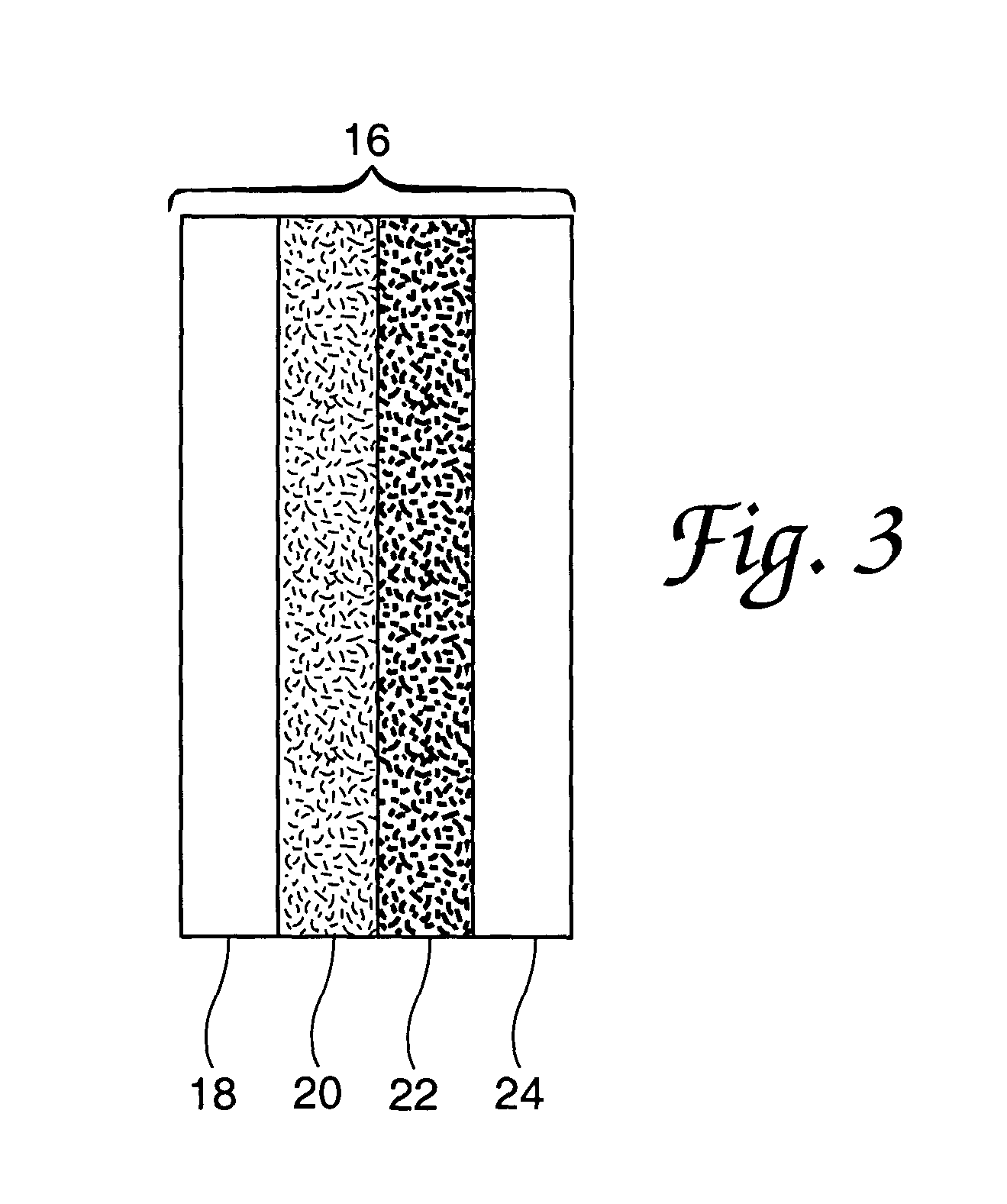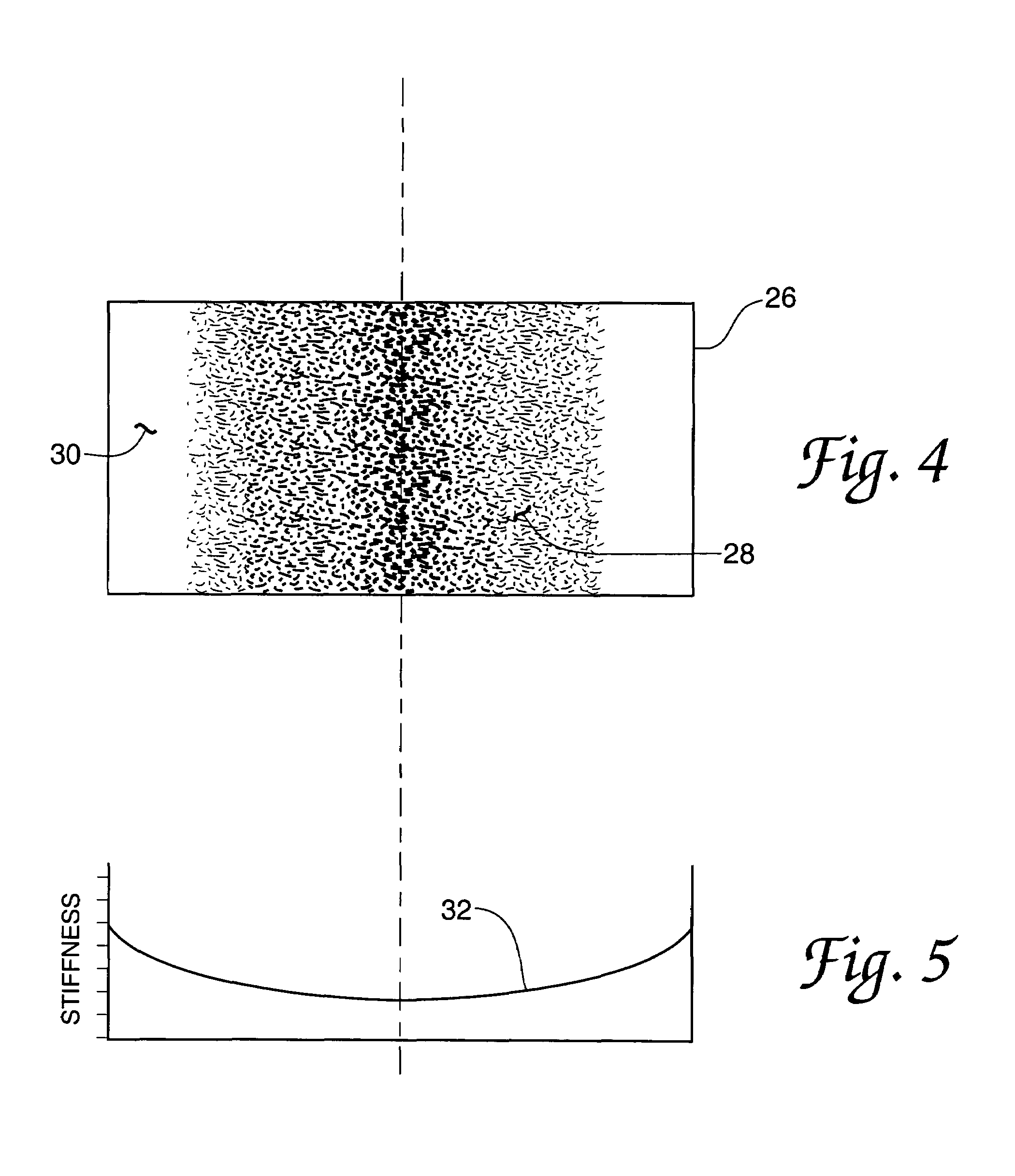Damage resistant and tolerant optical materials
a technology of optical materials and damage resistance, applied in the field of optical elements, can solve the problems of optically induced damage of optically limiting devices, damage to optically limiting devices inside the focal region, and damage to thermomechanical components in the surrounding matrix or host, etc., to achieve maximum performance, prolong shelf life, and increase durability
- Summary
- Abstract
- Description
- Claims
- Application Information
AI Technical Summary
Benefits of technology
Problems solved by technology
Method used
Image
Examples
Embodiment Construction
[0036]Referring now to FIG. 1 of the drawings, there is shown a schematic representation of a crosslinked polymer-based optical limiter 10 example embodiment of the present invention showing a distributive doping of a dopant 12. Optical limiter 10 takes the best properties of solid and liquid limiters and combines them into an improved optical element. Replacing a prior art solid or liquid host matrix with a soft crosslinked polymer or similar material does this. The softness of the crosslinked polymer, made in this example embodiment by using a low crosslink density crosslinked polymer, enables the chemical structure to withstand, and possibly dissipate, any thermally-induced mechanical stress which would otherwise cause a fracture at a heated inclusion site.
[0037]The viscoelastic, or mechanical, properties of the crosslinked polymer host material, that is, how soft or stiff the crosslinked polymer, is determined by crosslink density. Crosslink density can be controlled by carefull...
PUM
| Property | Measurement | Unit |
|---|---|---|
| Concentration | aaaaa | aaaaa |
| Electrical resistance | aaaaa | aaaaa |
| Stiffness | aaaaa | aaaaa |
Abstract
Description
Claims
Application Information
 Login to View More
Login to View More - R&D
- Intellectual Property
- Life Sciences
- Materials
- Tech Scout
- Unparalleled Data Quality
- Higher Quality Content
- 60% Fewer Hallucinations
Browse by: Latest US Patents, China's latest patents, Technical Efficacy Thesaurus, Application Domain, Technology Topic, Popular Technical Reports.
© 2025 PatSnap. All rights reserved.Legal|Privacy policy|Modern Slavery Act Transparency Statement|Sitemap|About US| Contact US: help@patsnap.com



